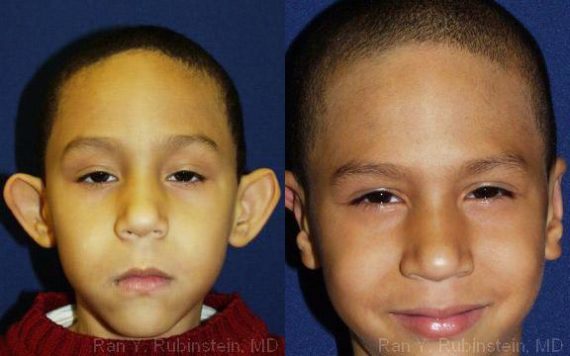Benefits of Otoplasty for All Ages
Do protruding or misshapen ears affect your confidence? Otoplasty can be your gateway to improved self-esteem and a balanced facial appearance. This straightforward surgical procedure offers transformative results that can impact your life positively.
Otoplasty – The Procedure
For younger patients, general anesthesia is commonly used. For adults, local anesthesia and sedation are usually used. Incisions are small and well-concealed as they are located in the back of the ear. There are various techniques which may be used to improve large or protruding ears.
The cartilage may be sculpted to a more desirable shape and bent back toward the head. In some cases, a large piece of cartilage may be removed. Other times, sutures may be used to fold the cartilage back onto itself to reshape the ear. In most cases, both ears are operated on in order to achieve symmetry.

Start Your Journey to Success, Don’t Wait More!
Schedule a consultation with Dr. Rubinstein
After Otoplasty Surgery: What to Expect
Patients typically experience minimal pain following ear surgery and any pain or discomfort that does occur is easily managed with medication. Bandages are applied after surgery and these are typically removed within a few days. Once the bandages are removed, a lighter head dressing is worn. Patients will need to refrain from sleeping on the ears for a period of time.
Work, school and other normal activities can often be resumed within five to seven days. Patients will need to avoid strenuous exercise and contact sports for at least one to two months.
Why Choose
Dr. Rubinstein
- Dr. Rubinstein is one of the top facial plastic surgeons in New York & New Jersey.
- He is double board certified by the American Board of Facial Plastic Surgery and the American Board of Otolaryngology-Head and Neck Surgery.
- Dr. Rubinstein has been in both private and academic practice for over 20 years.
- He is also an active member of the American Society for Laser Medicine & Surgery.
- Clinical Professor at New York Presbyterian Hospital.
Possible Complications during Otoplasty procedure
All surgery carries some risk. Possible complications associated with otoplasty may include adverse anesthesia reactions, blood clots, excessive scarring, infection, mismatched or artificial-looking ears and recurrence of the protrusion. If you are located in Poughkeepsie and are interested in plastic surgery visit our Poughkeepsie plastic surgery page!
Although we are located in Newburgh, we encourage patients looking for plastic surgery in Poughkeepsie or Middletown Plastic Surgery to contact us as well.

The Latest Advancements in Otoplasty
In the ever-evolving field of cosmetic surgery, staying informed about the latest advancements and trends in otoplasty is crucial. Our commitment is to provide you with the most current and comprehensive information, ensuring you make well-informed decisions about your ear surgery.
Keeping Up with New Technologies
The techniques and technologies in otoplasty continue to advance, offering more effective and efficient procedures. We regularly update our content to reflect these advancements, ensuring you have access to the latest information.






